Cranberries - a berry, familiar to almost every resident of our country, because it can often be found in the forests in the forests, as well as on the banks of the rivers, lakes and swamps. In addition, this culture can be successfully grown on their summer cottages. It has very useful healing properties for the body and at the same time is a storehouse of valuable vitamins-antioxidants. There are many varieties of this culture, but most often they grown by dackets Cranberry Stevens varieties. About the characteristics of cranberries Stevens, as well as on the rules of landing and care for this plant, we will describe further.
Cranberry Stevens: Description
Cranberries (from lat. Oxycoccus) belongs to the family of herase plants. Most often this culture grows in countries located in the northern hemisphere. Fruit culture edible berries having value in both cooking and medicine. The fruits of this culture have a few more "folk" names, for example, the residents of Greece are called their "acid berry", the Americans - "Crane Berry" (Cranberry), and the British - "Bear Berry".
Culture grows in the form of low shrubs, whose height often does not exceed 50-55 cm. Cranberries - a unpretentious plant, which tolerate freezing and does not suffer from abundance of moisture. The most "comfortable" plant feels in wet coniferous forests either on swampy plains. Wild cranberry types grow in the northwest of Russia, as well as in Siberia and the Far East. However, there are also garden grades of culture to which the following can be attributed:
- Ben Lear (early black). This is an early culture variety. Berries on this shrub appear at the end of summer. Fruits have a large size and dark red.
- Franklin. It fertures this grade of culture in September. Fruit color - bright red. Size - medium. The shelf life of the berry in the torn form - up to 3-4 months.
- Stevens. One of the most unpretentious varieties. Flowering is observed from the end of May or in early June. Fruit - at the end of September. Stevens always gives a good and abundant harvest. With 1 sq.m. The site can be collected up to 2 kg of berries. Plant Danalog Variety has a powerful root system.
Cranberry Stevens: landing
If the shrub "picks up" the most comfortable conditions for herself and grows mainly in swampy forests, then in the country area, it is necessary to create certain conditions for the successful planting of culture:
- A plot intended for planting culture should be located in an open area, the sun's rays should be good on it.
- It is desirable that the soil waters ran on a plot of 25 cm below the soil level.
- It would be good if there was an opportunity to arrange an artificial reservoir (pond) near the site.
- Do not be afraid that the growth of cranberries will prevent a small shading, so shrubs can be planted even near high trees.
Order and landing rules:
- It is planted in a cranberry in early March, when snow came down with the fields.
- Soil acidity on the site should be pH 2.5-6.2. To make the soil on a plot more favorable for cranberries, a peat substrate, forest humus in a 2: 1 ratio should be added to it.
- Before boarding, enrich the soil on the plot using the semi-folded needles from the forest (100 grams per 1 sq.m.).
- Next, the ground on the plot should be abundantly pouring.
- At a distance of 25 cm from each other make the landing wells. Saplings are placed in them and draw them on top of the earth. It should be said that for the landing it is worth taking only "healthy" and large seedlings whose height is at least 15 cm.
- After planting seedlings, the soil can not be touched on the site.
- Next, the aisle should be moisturized. To do this, it will be enough to pour a plot (0.5 buckets of water per 1 sq. M).
Conducting Cranberry Garden Stevens
According to gardeners, the care of cranberry Stevens is no problematic:
- At the beginning of the spring, the cranberry landing is carried out by a thinning trimming, during which the extraordinary shoots are removed, as well as those that have not survived the winter.
- In addition to trimming in the spring, the mineral fertilizers are fully completed. The concentration of the latter in solutions should not be too large. The fact is that cranberries easier to transfers the lack of fertilizers than their oversupply.
- Throughout the spring season, the ground near the cranberry bushes need to be kept in a moistened state. It needs to constantly explode and free from weeds. Cranberry requires bees to pollinate. However, it cannot attract their sufficient amount. To attract bees next to the planting berries, honey plants are planted, such as charker, oregano and others.
- Summer care for cranberries is in constant watering of the site so that the soil does not drive. During watering into water, some citric acid or vinegar can be added. It is acidified with the soil, and the cranberry is growing better on such soils. In summer, feeding is carried out only by necessity. In this case, they are brought together with watering.
- For the prevention of fungal diseases that may appear due to a constant irrigation, it is necessary to spray the plant with fungicides from time to time. The first 3 years of growth of the mandatory procedure should be the soil loan. After 3 years, the soil around cranberry bushes can be inspired by peat or coarse sand. The mulch layer thickness should be 2-3 cm. With a periodicity of 2-3 years, it is necessary to pour a new layer.
- Autumn Cranberry Care is to prepare plants by winter. Harvesting berries spend at the end of September - early October. Collect berries for unimited. The process of their ripening takes place during storage.
- To protect cranberries from severe frosts, pests during a honest winter it makes ice shelter. For this, the cranberry during frosts is poured with water with a layer to 5 cm. It is better to do this at a temperature of -1⁰s ... -5⁰s. With the first layer, finally frozen, poured the next, and so until the plants are completely under water. With soft winter shelter for cranberries, a laprop or spunbond can become.
Watering Cranberries Stevens
The first 10-15 days after landing on the cranberry plot are watered daily. Then the intensity of the irrigation is reduced, and returned to the daily scheme only in the case of a long drought. During the rest of the time, the ground around the plants should be wet, and not too wet. During the formation of berries, excess moisture can adversely affect their taste. Since the plant does not like heat, during her peak, it is necessary to arrange cooling watering. By the fall, the intensity (from September to October) watering slightly increases with the moisturizing ground, it is necessary to the depth of the root layer.
Cranberry reproduction Stevens
Propeliate cranberries in a vegetative way, as well as with the help of seeds. The last method is less popular and practiced only in selective purposes, since the seedlings do not inherit signs of the parent plant.
Reproduction seeds:
- In order to grow seedlings of Cranberry Cranberry, it is necessary to prepare cranberry seeds. Do it during the ripening period of berries. Well-matched berries knead and washed well in a large amount of water through a sieve. The resulting seeds are immediately evisted.
- If sowing will be held later, the landing material must necessarily go through the stratification procedure. For this, the seeds are shifted into the box and are covered with a layer of sand and peat with a ratio of 1: 4 and kept at a temperature of no more than + 7⁰s for 2-3 months.
- Immediately after the billet, seeds seed at the end of August - early September, and those that have passed the stratification procedure - at the beginning of spring. Sowing is produced in special containers with a substrate on its surface, without a blowjob. From above, the seeds are sprinkled with a layer of sand or crushed peat with a thickness of 5-10 mm and covered with glass, placing in a bright and warm place. Sowing necessarily moisten and ventilate to prevent the appearance of mold. If still traces of fungus were detected, the substrate is treated with a solution of fungicide.
- After the appearance of germs, the glass is cleaned, while the intensity of watering remains the same. After the plant appears, 4-5 of the present leaves, they are picked and planted in separate pots or to a greenhouse. The distance between the seedlings should be approximately 10-15 cm. Before disembarking in open ground, plants are frozen in the greenhouse during one year. Watering seedlings needed regular, as well as feeding. For the latter, a solution of comprehensive fertilizer "Kemira-Universal" is used at the rate of 1 st l per 10 liters of water. 1 liter solution is enough for 1 m 2 sowing. When subcorter, it is necessary to avoid the solution to the leaves. Otherwise, you can leave burns on them.
- A year later, Cranberry Saplings, Stevens, transplanted on a separate bed, so-called shkolka, and struck for another 1 year. After that, they can be transplanted to a new place. The first crop of cranberries can be tried 2-3 years after transplanting to a permanent place.
Reproduction with cuttings:
- Cutting cuttings are harvested late spring during the period of intensive shoot growth. The length of the cutlets should be at least 10 m. Cropped with a very sharp knife or a secateur.
- Then they are planted for a bed in the wells at a distance of 7 cm from each other. The cutlets are plugged at 2-3 cm and is satisted with soil, after which it is abundant.
- While the cuttings are not well rooted, it is necessary to keep the ground constantly wet, for which you can water it twice a day. Hot summer it is necessary to come up with protection from the scorching sun, so that it does not leave burns on the rapid cuttings.
- After rooting, and before that it takes approximately 3-4 weeks, planting cranberries Stevens per permanent place. Since the survival rate in cranberry cuttings is very good, this method of reproduction is the most popular.
Cranberry Stevens: Useful properties
- Regular use of cranberry berries can protect the body from various infections, viruses, and will strengthen the immune system. When problems with the digestive and digestion, cranberries are especially useful. So, it is able to improve appetite, fight the indentation of the stomach, eliminate heartburn and normalize acidity in the stomach.
- Cranberry is useful to use in the complex treatment of gastritis, gout, kidney and liver diseases.
- Fruits are useful to people who suffer over weight and those who are watching their figure. In addition, using cranberries, it is possible to normalize the metabolism in the body and reset the extra kilograms due to the normalization of fat metabolism. Also, these fruits are positively wagging on general well-being and besides the vitality.
- Cranberry benefits are also positive effects on the nervous system. The composition of the fruit well stimulates her work, improves the mood. This berry is also called an antidepressant berry.
- Due to the fact that these fruits contain folic acid and vitamin C, cranberries is considered one of the most useful food for pregnant women.
- Cranberry use has a positive effect on the work of the cardiovascular system. Potassium, which is contained in the fruit, strengthens the heart attack, warns the risk of infarction, vitamin C strengthens the vessels and makes them much more elastic. In addition, Vitamin C increases the body's protective forces and helps in combating pathogens of various respiratory diseases.
- Calcium, which is also contained in these fruits, is needed to strengthen bones. Phosphorus needs the body for normal brain operation. In addition, when using these fruits, the pressure stabilizes, the vessels from cholesterol plaques are cleaned.
- Due to the fact that it contains phytoncides in the cranberry, the fruits are destroying on the causative agents of dysentery and typhoid. The binding properties of berries are useful for problems with the gastrointestinal tract, both in fresh form and in the form of jam.
- In addition, cranberry fruits are useful for gastritis. Cranberries can be used to treat diarrhea. For this, the fruits take together with seeds, tick them, then rub together with honey or egg yolk. Cranberry kissel will be useful for various stomach disorders and with exacerbation of gastroenterocolitis.
Diseases and pests Cranberry Large-Board Stevens
The most commonly encountered diseases of the cranberries are:
- Snow mold. The fungal disease whose activity falls for April-May. The diseased plant can be allocated on the red-drier color of the leaves and the kidneys, on which the yellowish mycelium can be seen. In the development of the disease, the foci is beginning to merge and increase, which can lead to the death of the plant and the spread of fungus. Fighting with infection is carried out using the spraying of the Fundazole section. For the prevention, the winter fill of plants with water with a variety of soil is carried out.
- Monylla burn. This fungal disease is manifested by fading the tops of the shoots. From this they become brown and dry soon. The activity of the disease during fruiting can cause rotting berries. To combat the spraying of copper chlorokis, Fungicides Topsin M, Ditan, Ronilan, etc.
- Cytosporosis. This fungal disease penetrates in the summer through wounds on shoots. It is also called black rot. For prevention and treatment, burglar liquid is used, topsin m, copper chlorine.
There are more than 4 dozen different pests that can deliver the problems to planting cranberries. Most often on the bushes of the plant can be found:
- Chernogol lingonberry leaflet.
- Unpaired silkworm.
- Capping scoop.
- Versere Pyadenitsa.
The fight against them is carried out using the insecticides of a wide range of action, such as: carbofos, metaphos, actara, etc. However, it should be remembered that the processing should be carried out no later than a month before the start of harvesting, and not earlier than a month after the end of this.


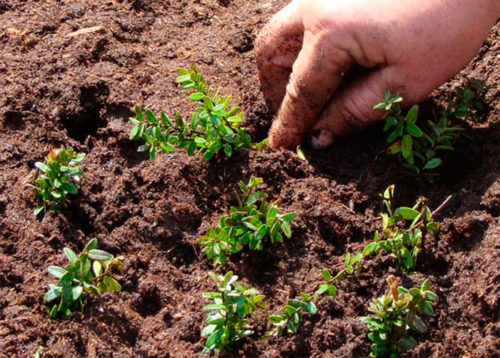


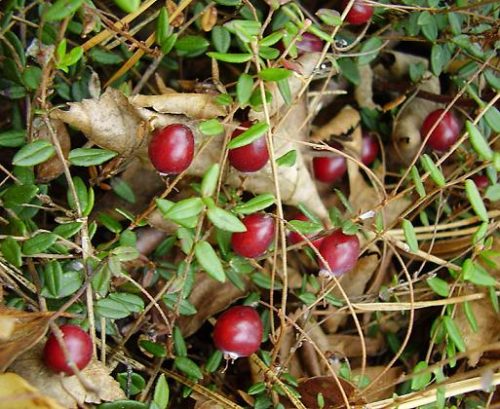
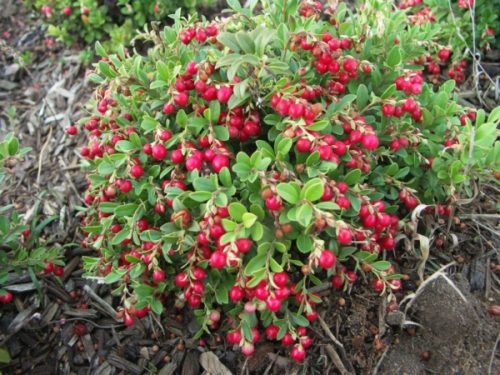
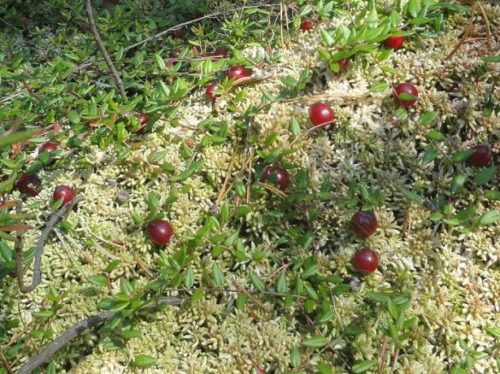
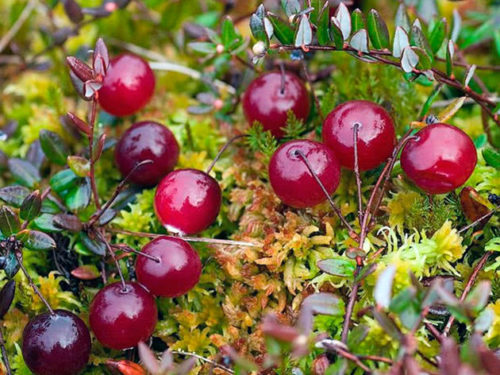
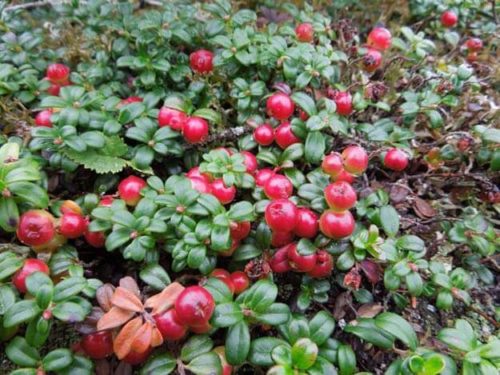
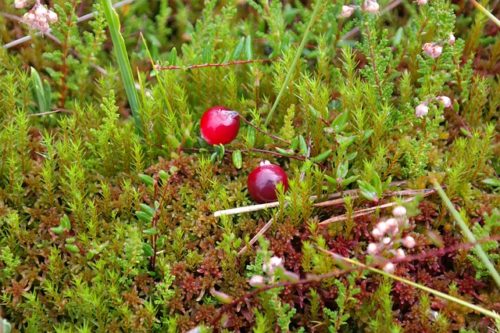

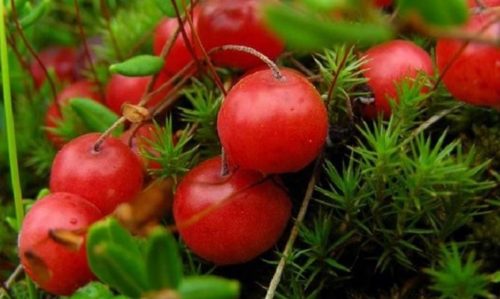
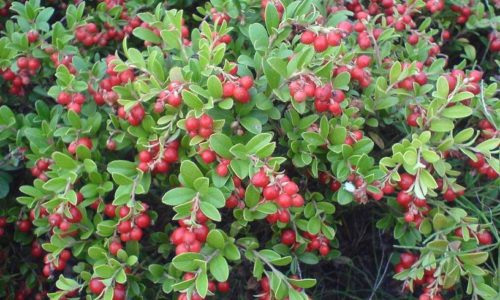












 Start a discussion ...
Start a discussion ...